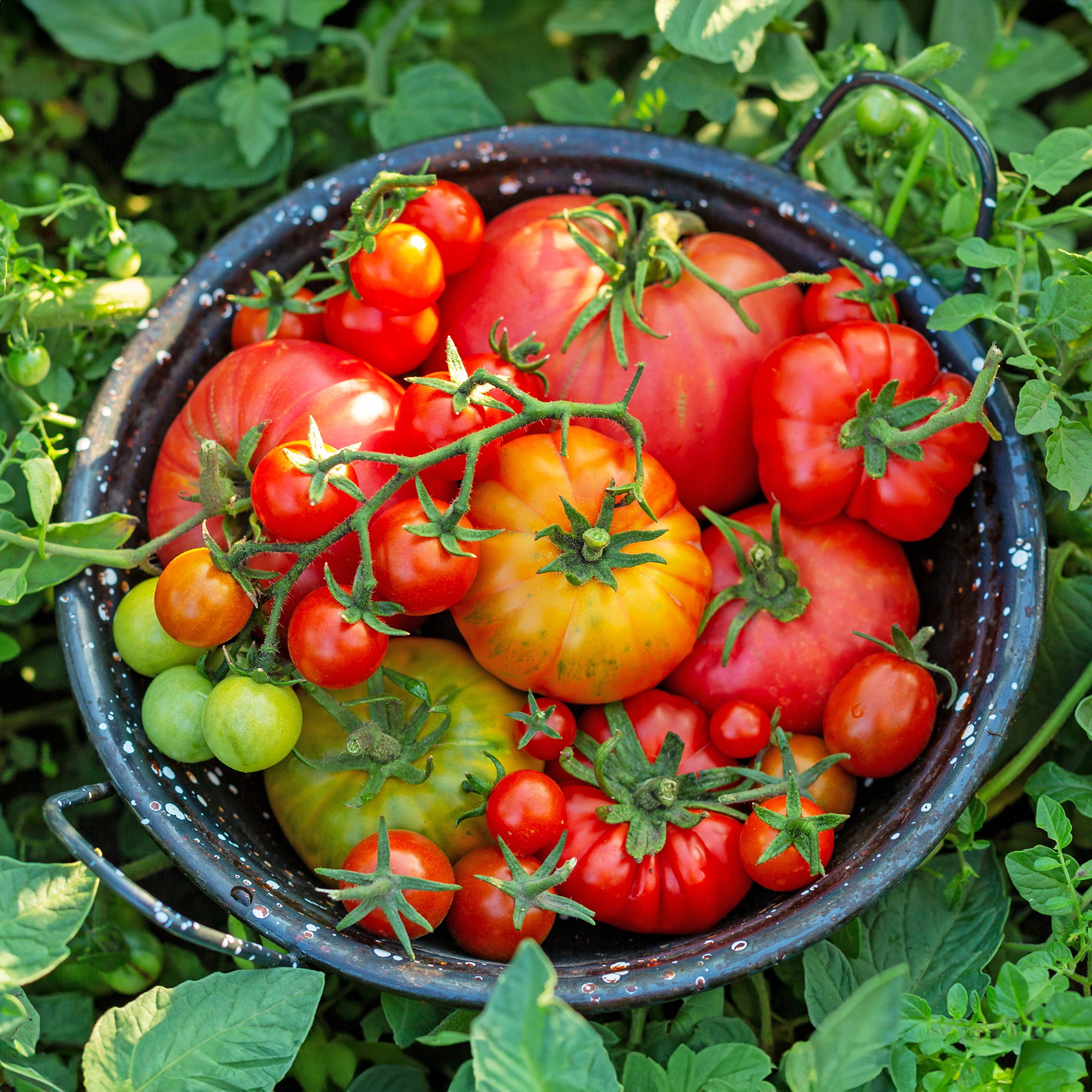How To Get Rid Of Aphids On Tomato Plants – And Keep Them From Coming Back
Aphids can quickly damage tomato plants – learn the signs of an infestation and the simple steps to protect your precious crop all season long.
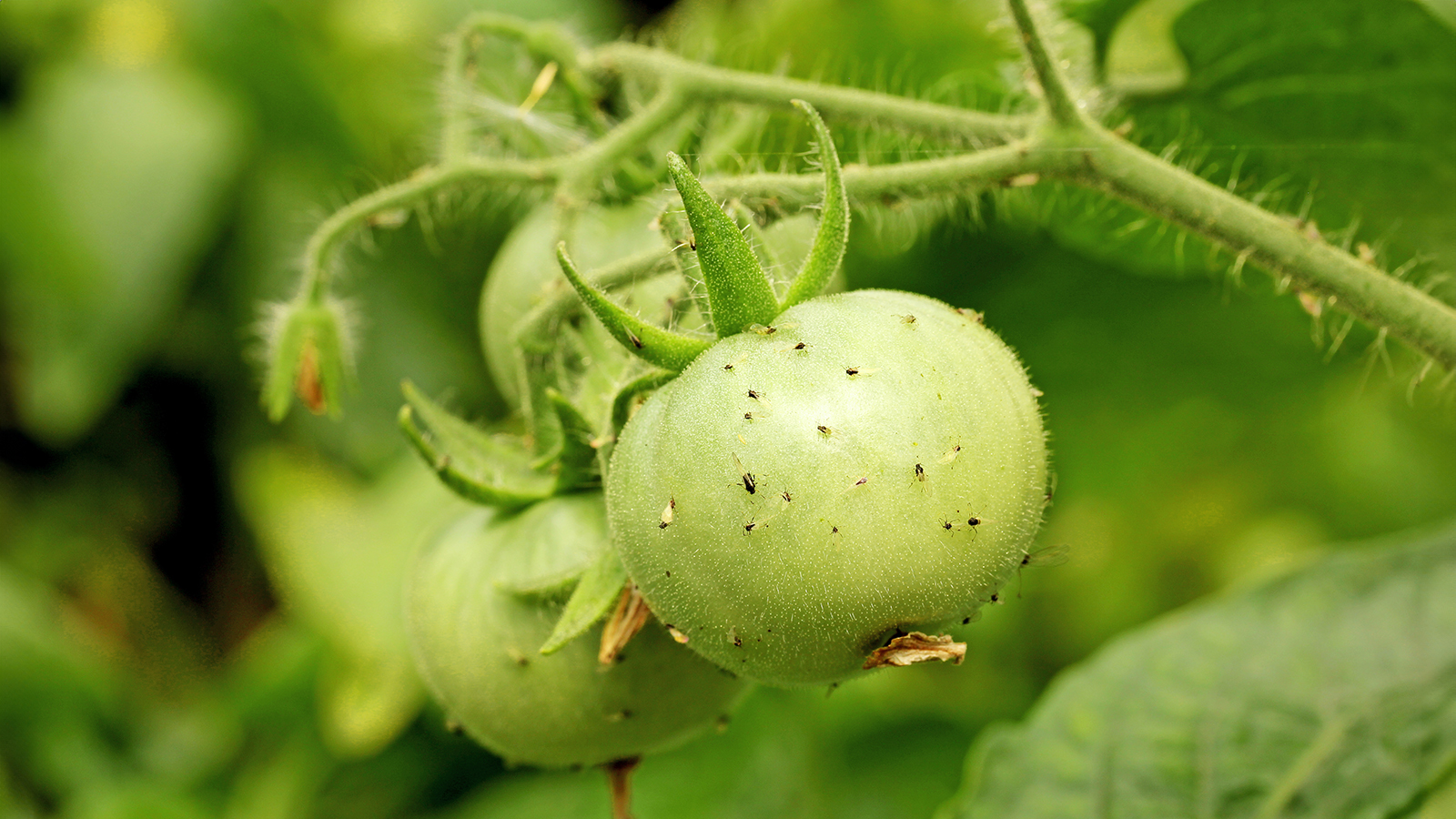
Aphids on tomato plants are the bane of many a gardener’s existence. While these tiny bugs may look fairly innocuous, tomato aphid damage can weaken the plant, open it up to disease, or even kill it if the infestation is severe.
Tomatoes aren't just delicious to us – they are tasty to many garden visitors too. Aphids are just one of many potential tomato plant pests, and while usually not the most destructive, they are nonetheless cursed by tomato growers far and wide. Unfortunately, getting rid of aphids is an inevitable part of gardening, and it's best to monitor plants and act fast as soon as they appear to minimize damage.
Of course, learning how to grow tomatoes properly goes a long way to improving a plant's odds against an onslaught of aphids. The right care will ensure your plants are as resilient to tomato problems as possible, so you don't have to let a few pesky bugs ruin your harvest.
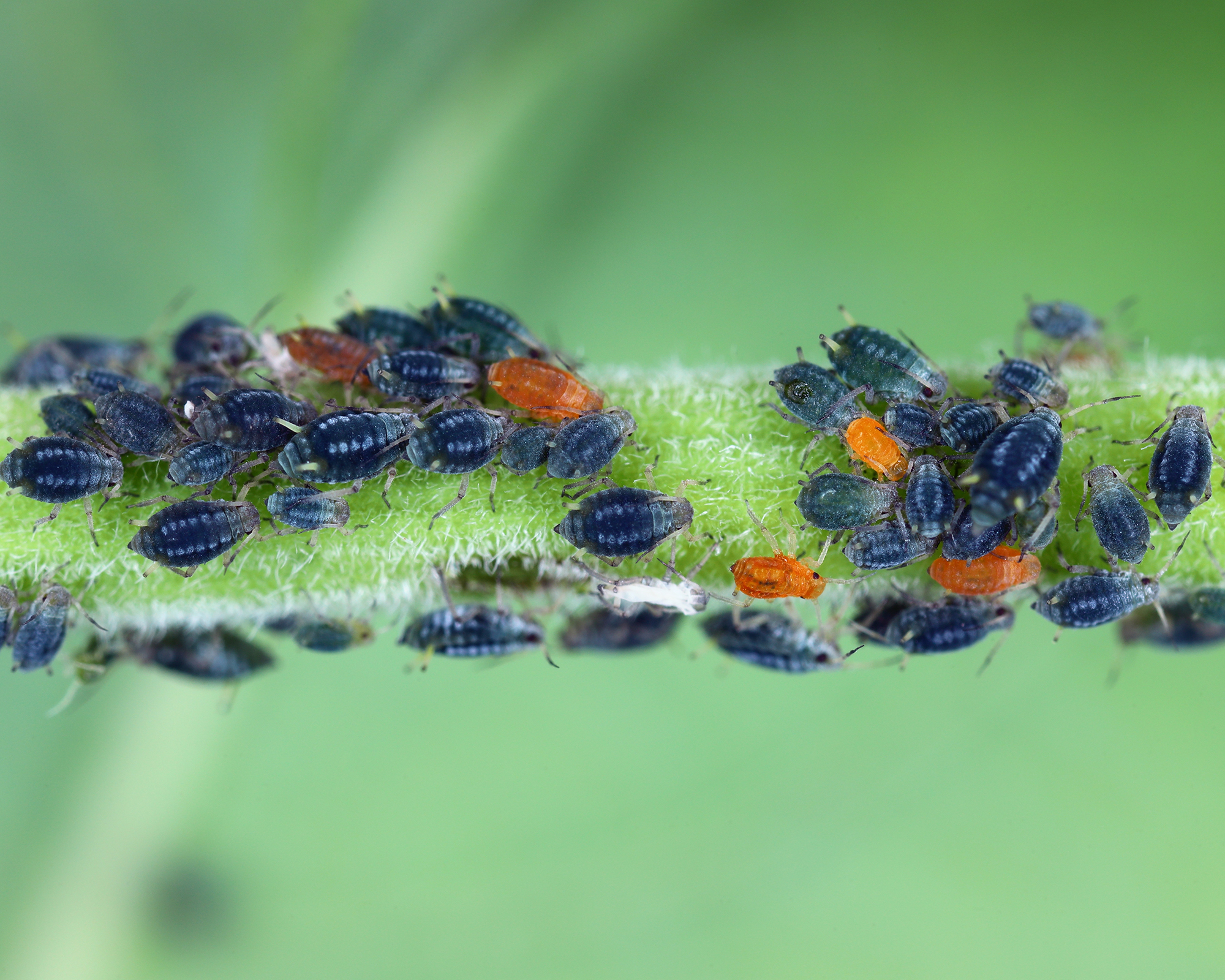
How to Identify Aphids on Tomato Plants
Aphids come in many colors. I’ve personally seen green, pink, black, blue (yes, blue), and white aphids. They all have one thing in common: they’re sap suckers that drain the life blood (sap) from a plant.
You might see black aphids or white aphids on tomato plants, or more commonly, the potato aphid, a pear-shaped dazzler that may be light pink, green and pink, or even light green with a dark stripe. These tiny sap suckers – under ¼ inch in length (6mm) – may be winged or wingless with long legs and antennae and two cornicles (tubes) jutting from their abdomen.
Not only do aphids weaken plants during feeding, but they also excrete a sugary waste called honeydew, which then becomes a host for sooty mold fungi. While sooty mold isn’t a direct threat to your tomatoes, it interferes with plant respiration and photosynthesis. It also invites other pests and fungi to take up residence. Ants are particularly attracted to the honeydew. They eat the honeydew provided by the aphids and, in return, protect the aphids from natural enemies.
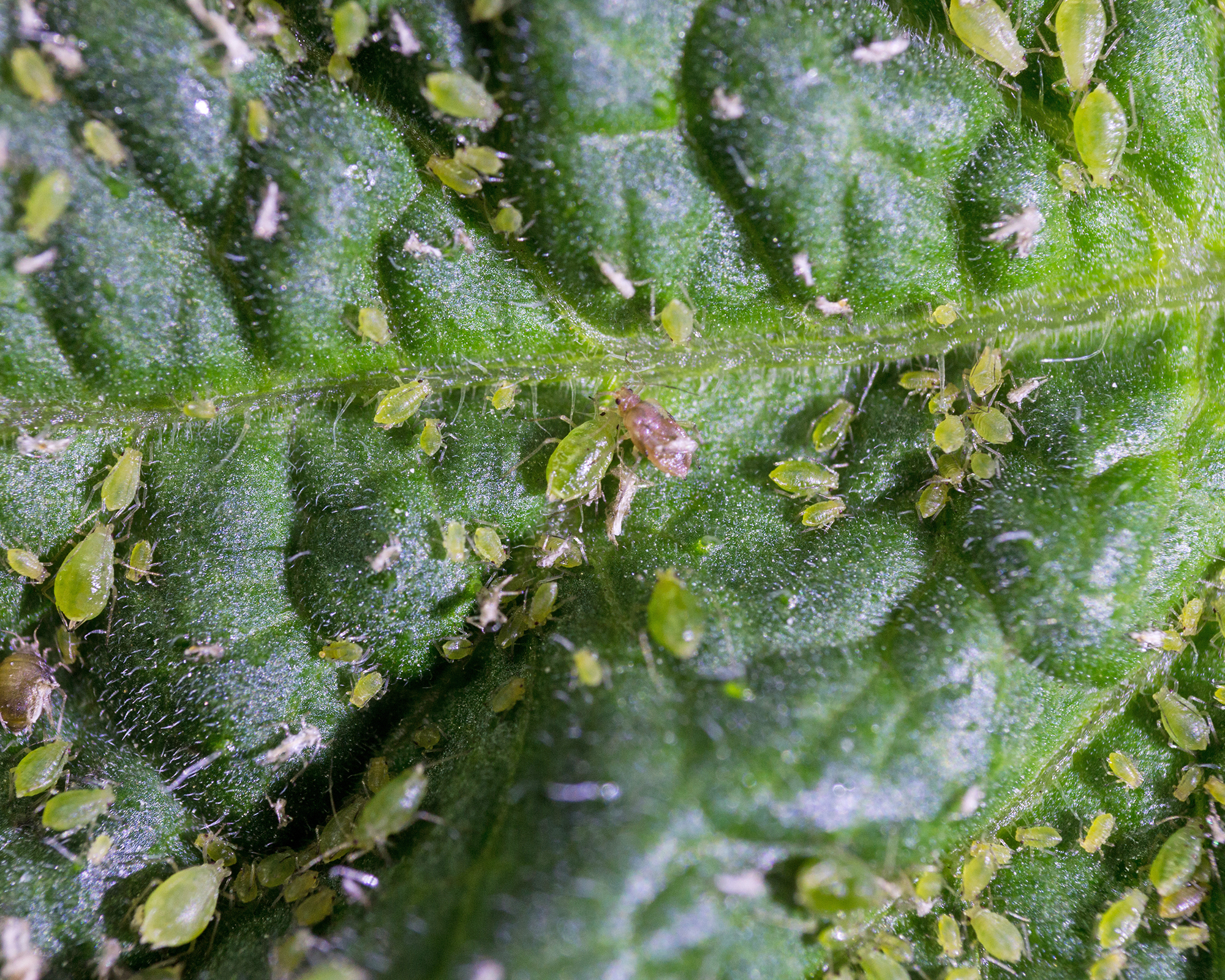
How to Get Rid of Aphids on Tomato Plants Naturally
Before resorting to chemical controls to rid your tomatoes of aphids, it is always best to try natural methods first:
Sign up for the Gardening Know How newsletter today and receive a free copy of our e-book "How to Grow Delicious Tomatoes".
- Use Natural Treatments – Insecticidal soap, neem oil applications, and diatomaceous earth are natural ways to rid the crop of these pests. Horticultural oil can also be applied to the insects to suffocate them.
- Wash Them Off – The cheapest and simplest way to get rid of aphids on tomato plants naturally is with a good blast of water from a hose. Use enough pressure to dislodge the little insects from their perches, but not enough to break branches of the tomato plant.
- Attract Beneficial Insects – If none of the above have succeeded in eradicating the aphid pests, try introducing beneficial insects that are natural predators. These include green lacewings, syrphid fly larvae, parasitic wasps, and ladybugs, all of which prey on aphids. However, it's not enough to just introduce these predators – you need to ensure you have enough of their favorite plants for them to want to stay, or they'll simply move on. You also need to take steps to control ants, which protect aphids from natural predators.
- Use Companion Plants – Tomato companion plants can help to attract beneficial insects and deter aphids at the same time. There are several great herbs to plant with tomatoes, as well as perfect companion flowers. For example, parsley attracts hoverflies, which feed on aphids, while thyme deters aphids and attracts parasitic wasps. Trap crops like nasturtiums or mustard can lure the aphids away from your beloved tomato plants.
- Sticky Traps – While sticky traps can be used to capture aphids, bear in mind that they may also capture beneficial insects.
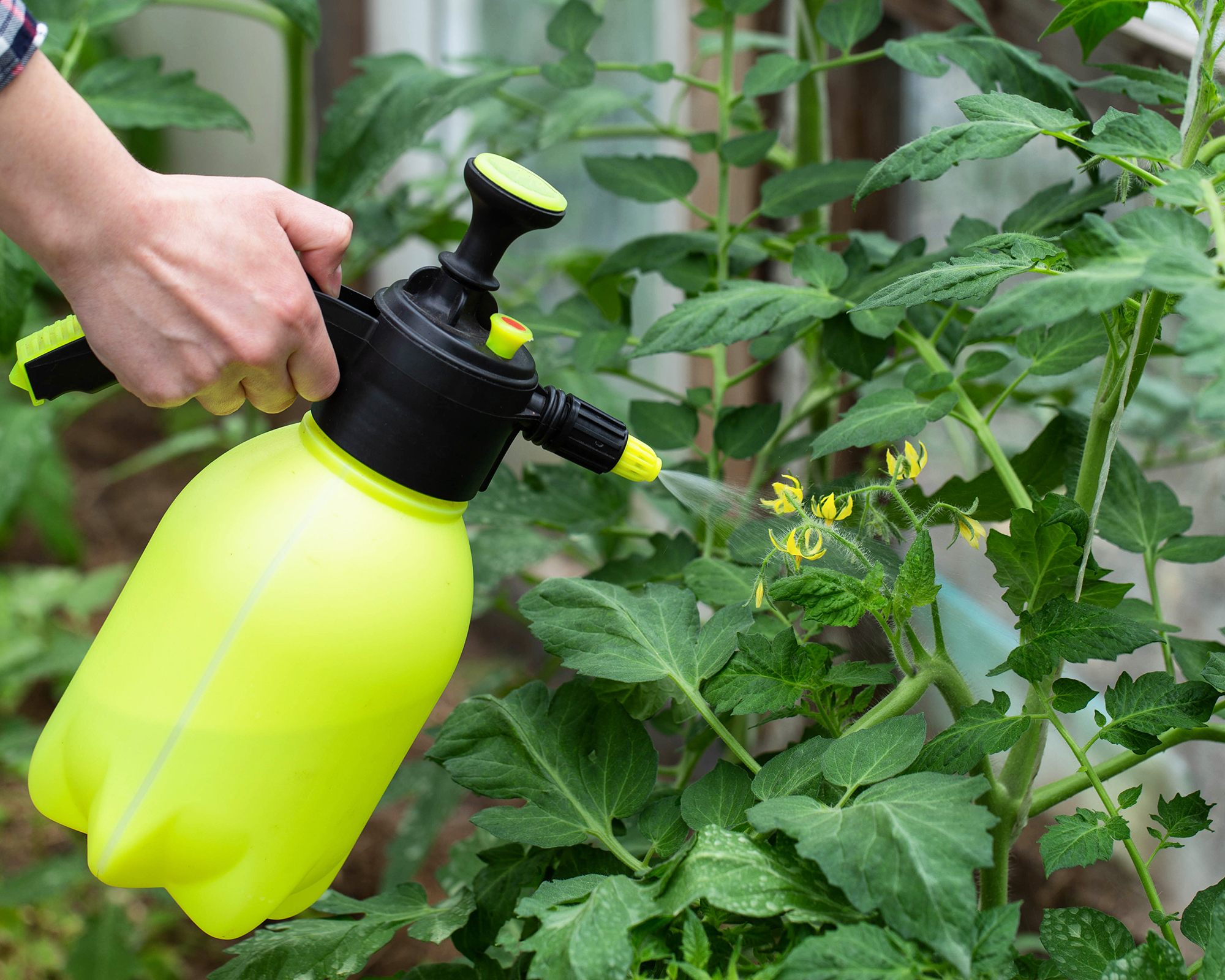
When to Consider Chemical Solutions
When all else fails, you might need to use chemical control. However, insecticides should only be used if the infestation is severe and all other natural controls have failed to eradicate the aphids.
- Commercial solutions of insecticidal soap are available to kill aphids. These are stronger formulations that require direct contact to kill.
- Permethrin is a natural chemical repellent that is also sprayed directly onto the insects to kill them.
- Malathion is an organophosphate insecticide that is considered to be fairly low in toxicity in comparison to others of its kind. However, it can still have detrimental effects if used without taking precautions. Use only as directed by the manufacturer
Cover both sides of the foliage and the stems, and only apply in the morning or evening when bee populations aren’t as prevalent.
Preventing Future Infestations
- To avoid aphid infestation, focus on growing healthy tomatoes, as the insects are more attracted to weak, stressed plants.
- When planting tomatoes, surround them with a variety of companion herbs and flowers to encourage beneficial insects.
- If you introduce natural predators, do so early in the season before aphid populations explode.
- Cover plants with floating row covers, available from Amazon, to protect plants from not only aphids but also other pests.
- Keep the area around the plants free from debris or weeds where aphids and other pests hide.
- Inspect your plants every couple of days to catch any infestation early when they are easier to deal with.
- Avoid over-fertilizing, which increases plant growth as well as the nutrients in the plant's sap. This makes the sap even more attractive to sap suckers like aphids and others. Instead, use smaller amounts of feed when fertilizing tomatoes during the early growing season to encourage plant growth but not aphid populations.

Amy Grant has been gardening for 30 years and writing for 15. A professional chef and caterer, Amy's area of expertise is culinary gardening.

